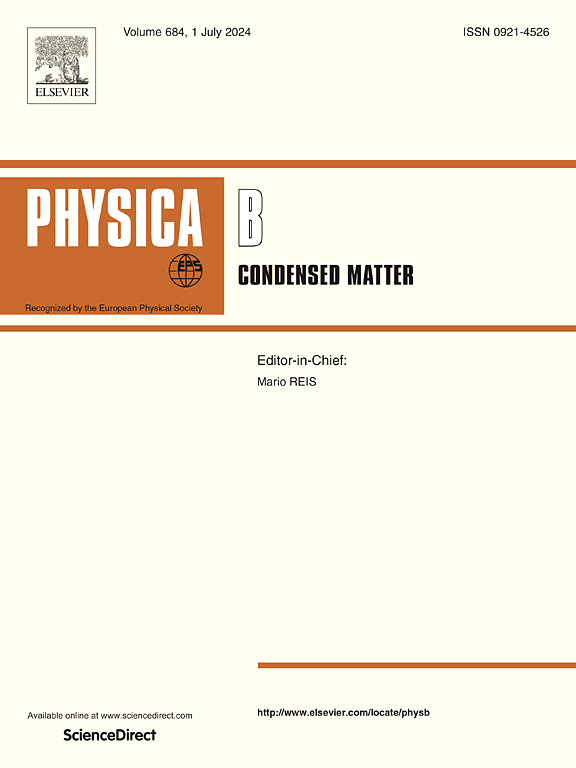Comprehensive analysis of the effect of Na doping concentration on the essential physical properties of K2PdO2: A first principle study
IF 2.8
3区 物理与天体物理
Q2 PHYSICS, CONDENSED MATTER
引用次数: 0
Abstract
This study investigates the effects of sodium (Na) doping on K2PdO2, a semiconductor with a wide band gap and low absorption of visible electromagnetic radiation, using Wien2k based on Density Functional Theory (DFT). The results reveal that Na doping is an effective approach to enhancing the optical absorption properties of these materials. Both the pure and doped compounds exhibit negative formation energies, confirming their thermodynamic and structural stability. Density of States and electronic band structure analyses show that all compounds remain semiconducting, with the band gap decreasing from 2.29eV to 1.65eV upon doping. Increased charge due to doping induces polarization and reduces light velocity, as reflected by the rise in the refractive index with higher Na content. Additionally, optical conductivity improves, indicating enhanced sensitivity to visible light. These findings, along with the favorable thermoelectric response, position K2PdO2 as a promising candidate for various thermoelectric device applications.
求助全文
约1分钟内获得全文
求助全文
来源期刊

Physica B-condensed Matter
物理-物理:凝聚态物理
CiteScore
4.90
自引率
7.10%
发文量
703
审稿时长
44 days
期刊介绍:
Physica B: Condensed Matter comprises all condensed matter and material physics that involve theoretical, computational and experimental work.
Papers should contain further developments and a proper discussion on the physics of experimental or theoretical results in one of the following areas:
-Magnetism
-Materials physics
-Nanostructures and nanomaterials
-Optics and optical materials
-Quantum materials
-Semiconductors
-Strongly correlated systems
-Superconductivity
-Surfaces and interfaces
 求助内容:
求助内容: 应助结果提醒方式:
应助结果提醒方式:


